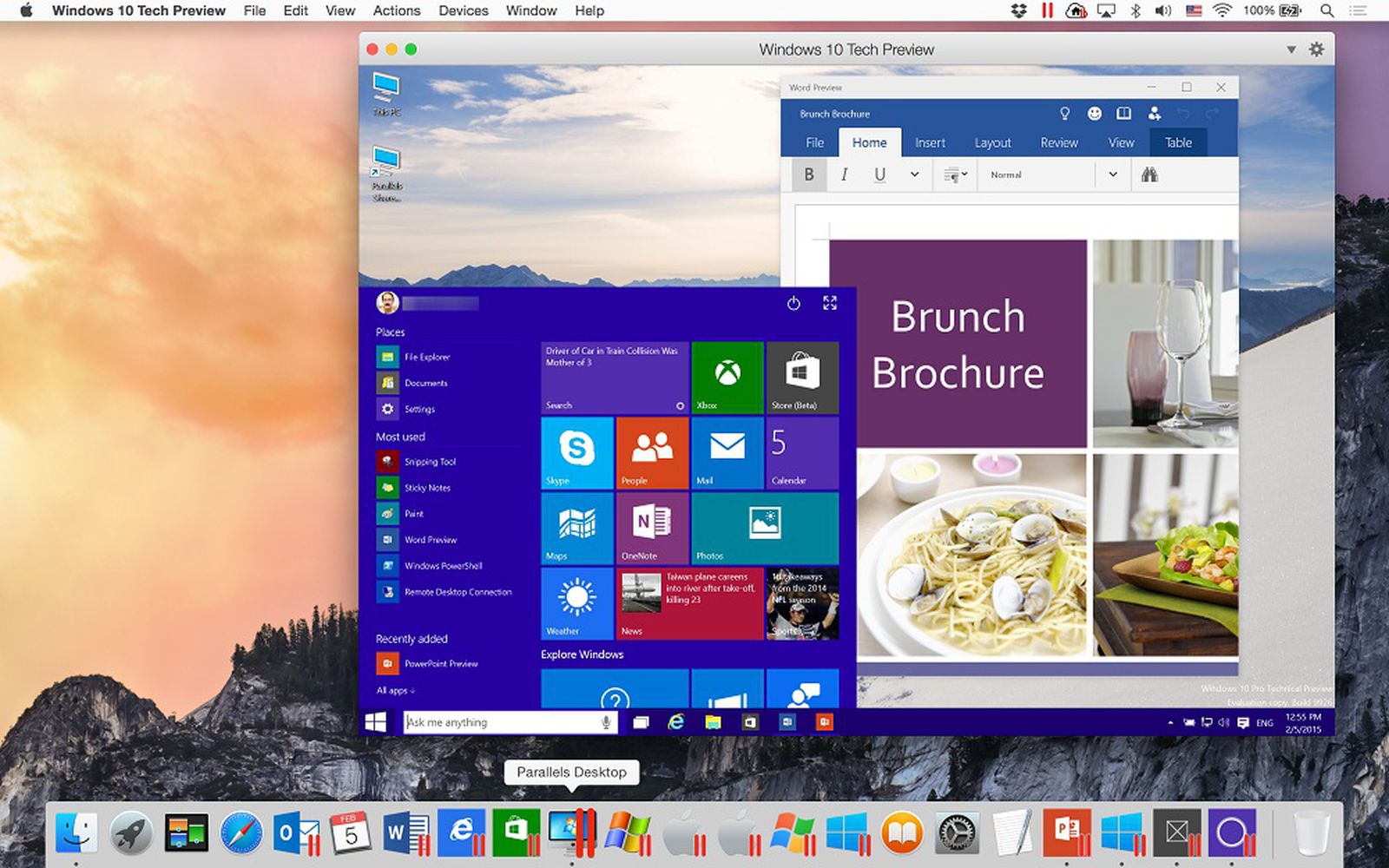Mid 2013 rMBP - Yosemite + Bootcamp Windows 10. 'Event 129, storahci - Reset to device, Device RaidPort0, was issued.' - with System and System Interrupts in task manager sucking up heaps of resources. Putting the system to sleep and waking it seems to fix the System/Interrupts - but still get the hanging/freezing issue.
What you need to install Windows 10 on Mac
Brigadier 0.2.3 (March 7, 2016) set msiexec '/qb-' flag instead of '/qr' to avoid issues with modal dialog popups during Boot Camp MSI installation update default sucatalog to El Capitan. We would like to show you a description here but the site won’t allow us. Windows 10, 64-bit Windows 7 SP1, 64-bit. OS X El Capitan (10.11) eDrawings 2017. Apple Mac ® based machines running Windows using Boot Camp are not supported. For more information about using Windows on your Mac, open Boot Camp Assistant and click the Open Boot Camp Help button. If you're using an iMac (Retina 5K, 27-inch, Late 2014) or iMac (27-inch, Late 2013) or iMac (27-inch, Late 2012) with a 3TB hard drive and macOS Mojave or later, learn about an alert you might see during installation.
- MacBook introduced in 2015 or later
- MacBook Air introduced in 2012 or later
- MacBook Pro introduced in 2012 or later
- Mac mini introduced in 2012 or later
El Capitan Boot Camp Windows 10 Safe Mode
- One such finding relates to how El Capitan handles the installation of Windows through the Boot Camp Assistant. If you’re familiar with Apple’s Boot Camp Assistant, then the first thing you’ll notice on El Capitan is that the main interface has changed. The internal changes now mean that the ISO image option, and the ability to partition.
- Mention, that for MacOS versions prior to OS X El Capitan 10.11 you will need to create bootable Windows USB. Download Windows ISO file; Open Boot Camp Assistant (Go to Applications Utilities) Define the Windows partition size choose downloaded Windows ISO file; Format Windows partition and go through all Windows installation steps.
- A mid-2011 iMac or similar running OSX El Capitan; An 8GB or larger USB drive; An ISO containing Windows 10 (I used Windows 10 Enterprise) 50GB free disk space, 100GB recommended; Step 1: Disable El Capitan's System Integrity Protection. El Capitan ships with a new OS X feature: System Integrity Protection (SIP), also known as 'rootless' mode.
- Boot Camp supports Windows 10 in Yosemite or later with the listed Macs towards the end of this page. That doesn't mean Win 10 won't work at all if your Mac isn't in the list. I upgraded Win 7 to Win 10 on my 2010 Mac Pro and it runs fine on the Win 7 Mac drivers. Yes, it's supported.
- iMac introduced in 2012 or later1
- iMac Pro (all models)
- Mac Pro introduced in 2013 or later
The latest macOS updates, which can include updates to Boot Camp Assistant. You will use Boot Camp Assistant to install Windows 10.
64GB or more free storage space on your Mac startup disk:
- Your Mac can have as little as 64GB of free storage space, but at least 128GB of free storage space provides the best experience. Automatic Windows updates require that much space or more.
- If you have an iMac Pro or Mac Pro with 128GB of memory (RAM) or more, your startup disk needs at least as much free storage space as your Mac has memory.2
An external USB flash drive with a storage capacity of 16GB or more, unless you're using a Mac that doesn't need a flash drive to install Windows.
A 64-bit version of Windows 10 Home or Windows 10 Pro on a disk image (ISO) or other installation media. If installing Windows on your Mac for the first time, this must be a full version of Windows, not an upgrade.
- If your copy of Windows came on a USB flash drive, or you have a Windows product key and no installation disc, download a Windows 10 disk image from Microsoft.
- If your copy of Windows came on a DVD, you might need to create a disk image of that DVD.
How to install Windows 10 on Mac
To install Windows, use Boot Camp Assistant, which is included with your Mac.
1. Check your Secure Boot setting
Learn how to check your Secure Boot setting. The default Secure Boot setting is Full Security. If you changed it to No Security, change it back to Full Security before installing Windows. After installing Windows, you can use any Secure Boot setting without affecting your ability to start up from Windows.
2. Use Boot Camp Assistant to create a Windows partition
Open Boot Camp Assistant, which is in the Utilities folder of your Applications folder. Follow the on-screen instructions.
- If you're asked to insert a USB drive, plug your USB flash drive into your Mac. Boot Camp Assistant will use it to create a bootable USB drive for Windows installation.
- When Boot Camp Assistant asks you to set the size of the Windows partition, remember the minimum storage-space requirements in the previous section. Set a partition size that meets your needs, because you can't change its size later.
3. Format the Windows (BOOTCAMP) partition
When Boot Camp Assistant finishes, your Mac restarts to the Windows installer. If the installer asks where to install Windows, select the BOOTCAMP partition and click Format. In most cases, the installer selects and formats the BOOTCAMP partition automatically.
4. Install Windows
Unplug any external devices that aren't necessary during installation. Then click Next and follow the onscreen instructions to begin installing Windows.
5. Use the Boot Camp installer in Windows
After Windows installation completes, your Mac starts up in Windows and opens a ”Welcome to the Boot Camp installer” window. Follow the onscreen instructions to install Boot Camp and Windows support software (drivers). You will be asked to restart when done.
- If the Boot Camp installer never opens, open the Boot Camp installer manually and use it to complete Boot Camp installation.
- If you have an external display connected to a Thunderbolt 3 port on your Mac, the display will be blank (black, grey or blue) for up to 2 minutes during installation.

How to switch between Windows and macOS
Restart, then press and hold the Option (or Alt) ⌥ key during startup to switch between Windows and macOS.
Learn more
If you have one of these Intel-based Mac models using OS X El Capitan or later, you don't need a USB flash drive to install Windows:
- MacBook introduced in 2015 or later
- MacBook Air introduced in 2017 or later3
- MacBook Pro introduced in 2015 or later3
El Capitan Boot Camp Windows 10
- iMac introduced in 2015 or later
- iMac Pro (all models)
- Mac Pro introduced in late 2013 or later
Bootcamp Drivers Windows 10
To remove Windows from your Mac, use Boot Camp Assistant, not any other utility.
El Capitan Boot Camp Windows 10 64
For more information about using Windows on your Mac, open Boot Camp Assistant and click the Open Boot Camp Help button.
El Capitan Boot Camp Windows 10 Iso
1. If you're using an iMac (Retina 5K, 27-inch, Late 2014) or iMac (27-inch, Late 2013) or iMac (27-inch, Late 2012) with a 3TB hard drive and macOS Mojave or later, learn about an alert you might see during installation.
2. For example, if your Mac has 128GB of memory, its startup disk must have at least 128GB of storage space available for Windows. To see how much memory your Mac has, choose Apple menu > About This Mac. To see how much storage space is available, click the Storage tab in the same window.
Install Windows 10 El Capitan Boot Camp


3. These Mac models were offered with 128GB hard drives as an option. Apple recommends 256GB or larger hard drives so that you can create a Boot Camp partition of at least 128GB.